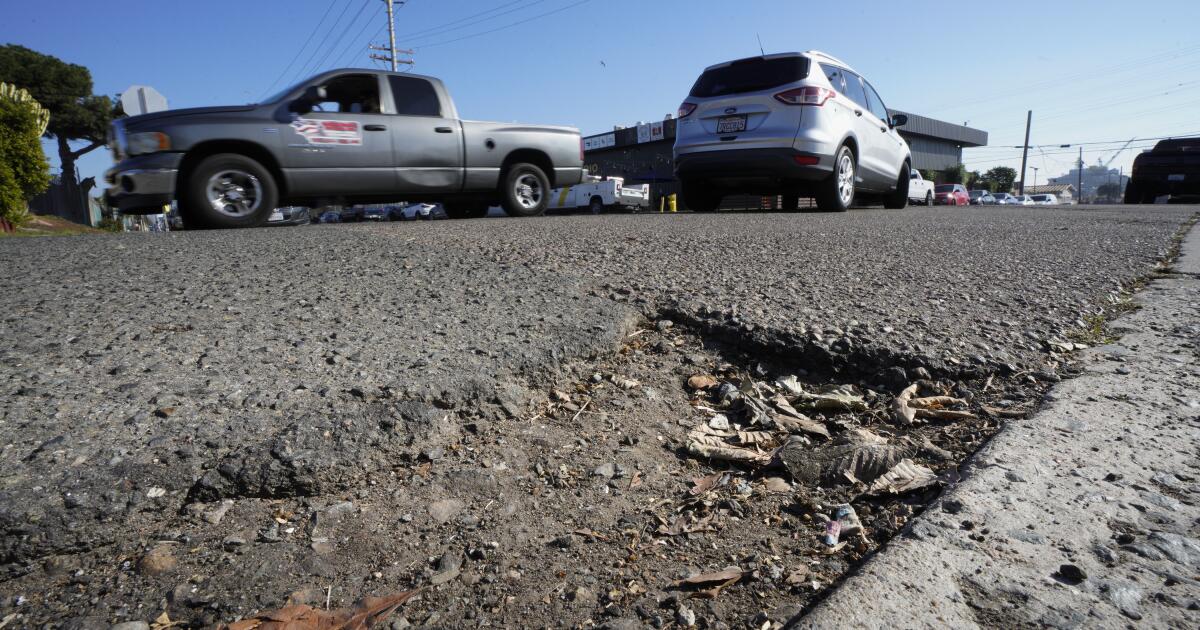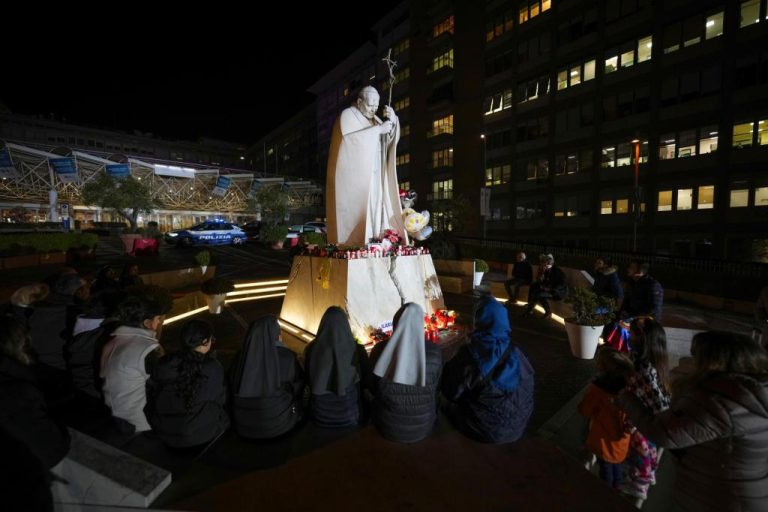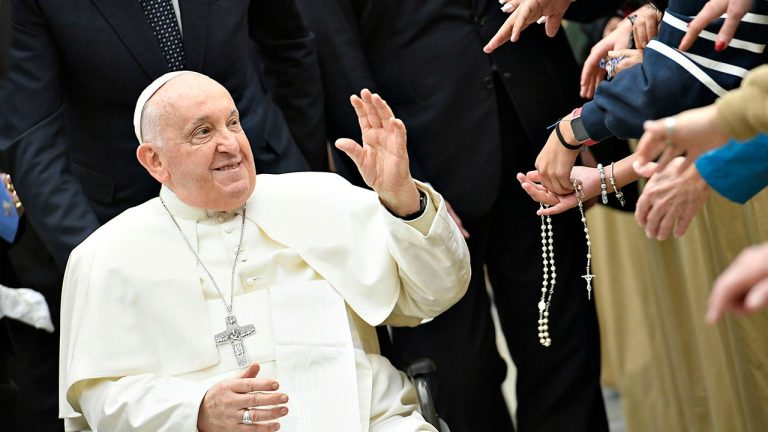

San Diego officials are touting a proposed local sales tax increase as a game-changer that could wipe out the city’s recurring budget deficits and generate enough money to shore up crumbling roads and infrastructure.
Details of the proposed 1-cent increase, which city officials have been negotiating for months in closed-door meetings, were revealed publicly for the first time last week and will be debated at a public hearing Wednesday.
The proposed November ballot measure would raise the city’s sales tax rate by a full cent, moving it from the lowest in the county at 7.75 percent to the highest at 8.75 percent.
The hike is expected to generate about $400 million in annual revenue in coming years, a nearly 20 percent increase for San Diego’s general fund that covers police, firefighting, parks, libraries and other crucial city services.
“This is the way to really improve our city,” said Councilmember Raul Campillo, who is spearheading the proposal along with Mayor Todd Gloria. “People are asking for more services, and they rightfully expect the city to deliver paved streets and clean recreation centers and other necessities. This is the solution.”
While tax measures are almost always a tough sell at the ballot box, local political consultant Larry Remer says many things seem to be lining up in favor of the city’s proposal.
The measure would only need approval from a simple majority of voters, and Remer expects November to be a high-turnout presidential election, usually friendlier ground for tax measures than off-year elections.
He said San Diego also has a persuasive case to make to voters because of its lacking city services, highly publicized shortage of police officers and notoriously bad roads.
“You have to convince people there’s a compelling need for it, and the city has plenty of compelling needs,” said Remer, who has helped the San Diego Unified School District pass bond measures totaling $15 billion in revenue.
The measure would only need approval from a simple majority of voters because the money wouldn’t be used for a specific purpose. That’s easier than the two-thirds approval threshold that has tripped up other local tax increases.
Remer said this November’s election will attract low-income voters, voters of color and other demographics that are less likely to vote in primary elections.
“Those are people who typically see the benefit more directly of city services and places like parks and libraries, so they are more likely to vote yes,” Remer said.
But one factor that may work against the measure is likely opposition from the San Diego County Taxpayers Association, which says it won’t support the measure unless there is a sunset clause, possibly of four years, after which voters would have to re-approve it.
Campillo said such a clause is a non-starter because it would eliminate a key goal of the measure: solving the city’s long-term financial problems.
“It would effectively cut our ability to plan for the future,” he said. “This is a way to close the gap between our revenue and our needs and maintain a balance between them into the future.”
The taxpayers association has also expressed concern about giving $400 million a year more to a city government with a track record of mismanagement.
Remer said that could be a concern for some voters. But he suggested some glaring examples, such as the city’s wasting hundreds of millions on an unusable skyscraper on Ash Street, may have faded from some voters’ memories.
And people angry about long hold times on city customer service lines and missed trash pickups probably make up only a small sliver of the electorate, he added. “Most people get their trash picked up with no problems and never call the city,” he said.
Another potential problem could be the argument that sales tax increases fall more heavily on low-income residents than property tax or parcel tax increases or local income taxes.
But Remer said those arguments are too academic to matter to most voters. “There’s no question a property tax increase would be more progressive, but I don’t think that will be a factor,” he said.
A more legitimate concern, he said, might be other tax measures on the November ballot.
A half-cent countywide sales tax increase to help pay for road repairs, carpool lanes and expanded bus and rail transportation has already qualified for that ballot.
And city officials have discussed placing a new flood tax on that ballot that would help pay for storm channel clearing and other flood prevention and water quality efforts.
Remer doesn’t see the county sales tax proposal as a significant threat to the city’s, predicting city voters would prioritize the more local measure if they felt like they could only vote for one.
But he said the flood tax could be a problem, contending that having it on the same ballot as the sales tax increase would appear to undermine the message that the sales tax hike is the only way to solve crucial city problems.
Campillo said a strong argument for the sales tax increase is that San Diego’s rate is the lowest in the county and among the lowest in the state.
The rate is 8.25 percent in Oceanside, El Cajon and Vista, where city voters have approved half-cent increases. It is 8.5 percent in La Mesa, where voters approved a three-quarter-cent increase.
And the rate is 8.75 percent in the cities of Chula Vista, National City, Del Mar, Solana Beach and Imperial Beach, all of whose voters approved full-cent increases.
Cities that approve full-cent surcharges are essentially doubling the sales tax revenue they receive.
That’s because of the 7.25 percent state sales tax, 6.25 percent goes to Sacramento and 1 percent stays with the local jurisdiction. By adding a full cent, a city doubles the local take from 1 percent to 2 percent of all sales.
Across San Diego County, the base rate is 7.75 percent instead of the statewide 7.25 percent because of the voter-approved Transnet half-cent surcharge to pay for transportation projects.
San Diego is projected to collect $374 million in sales tax revenue during fiscal year 2024, which ends in June. The proposed ballot measure would double that to $748 million, a number expected to rise quickly in coming years because of inflation.
Campillo said he chose a full-cent increase instead of a half cent because San Diego faces such large structural budget gaps — including nearly $5 billion in needed infrastructure work the city can’t afford.
“We have report after report after report,” Campillo said. “One cent gets the revenue we need. Half a cent wouldn’t fill the gap.”
Campillo said he doesn’t believe the higher tax will have a big impact on people.
“If they are buying a $4 cup of coffee, they are paying only 4 more cents,” he said.
City labor unions, particularly the 5,000-member Municipal Employees Association and the 2,000-member Police Officers Association, are expected to strongly support the measure with mailers and other efforts.
Remer said another crucial factor will the 75-word ballot statement describing the measure to voters, contending it must establish the need for the money and make it clear the city can be trusted to spend it well.
That statement will be the only information some voters ever get about the measure, he pointed out. “It’s the most important element of the campaign,” he said.
And another factor could be how high-profile a role Mayor Gloria, who is also up for re-election, plays in the campaign for the measure. If he plays a large role, voters could see both campaigns as intertwined.
“Todd’s popularity will matter,” Remer said. “If you want to re-elect him, you also want to give him the tools to do a good job.”
Campillo and his staff will present the proposed ballot measure to the City Council’s Rules Committee at 9 a.m. Wednesday. If approved there, the full council would then consider placing it on the ballot later this year.
Campillo said he is confident he will get support from enough council members to place the measure on the ballot.
“I often hear my colleagues say we are short revenue,” Campillo said. “This penny sales tax increase will go a long way toward solving that.”







